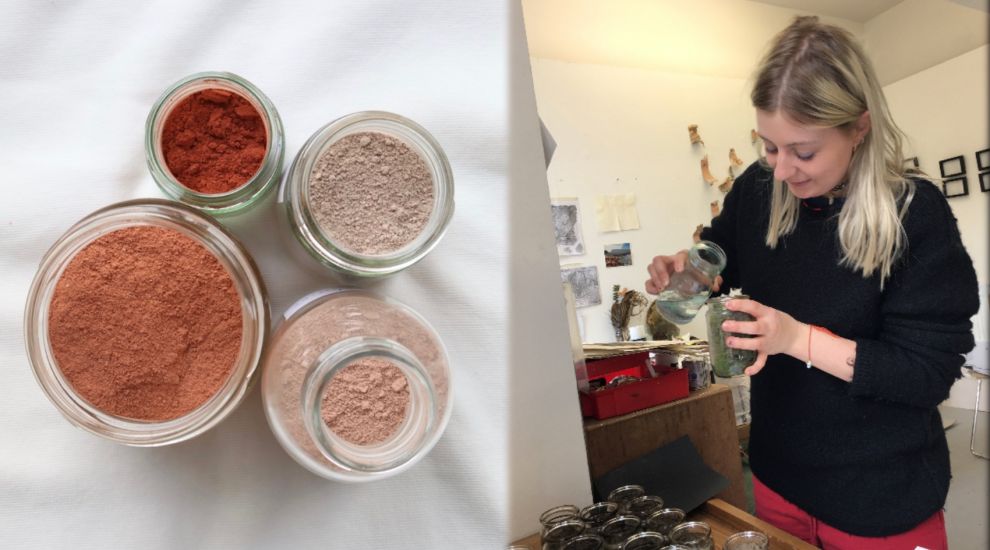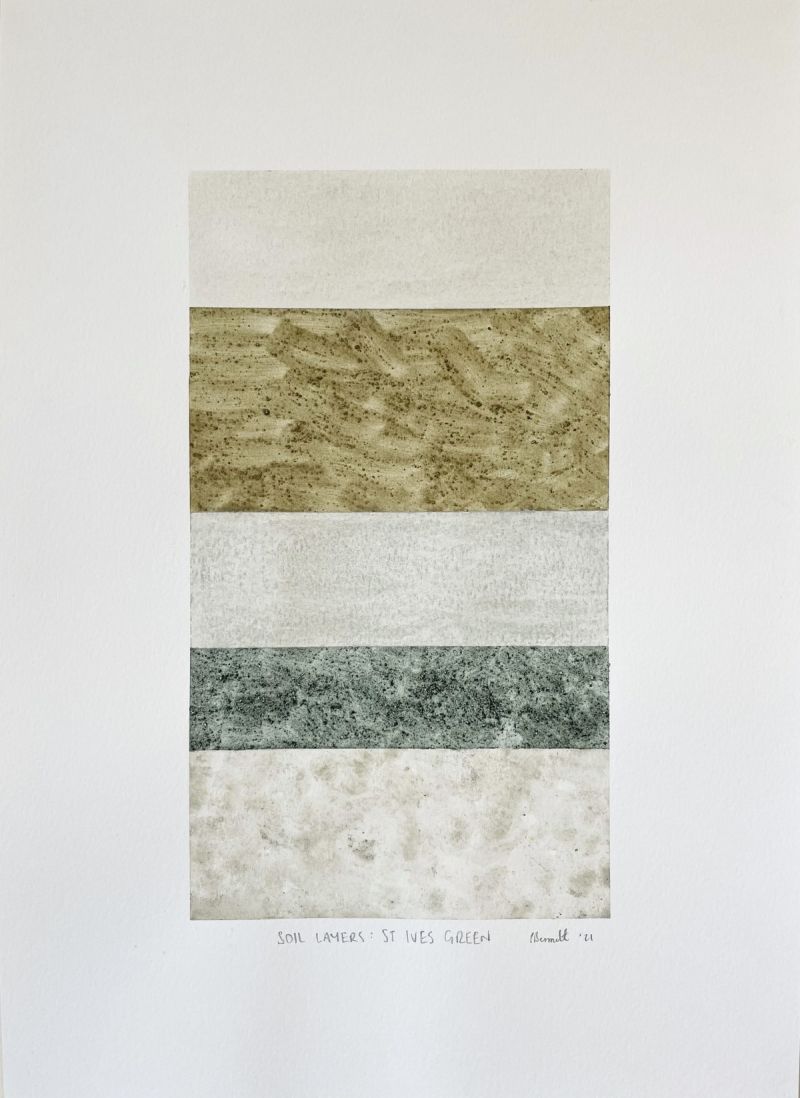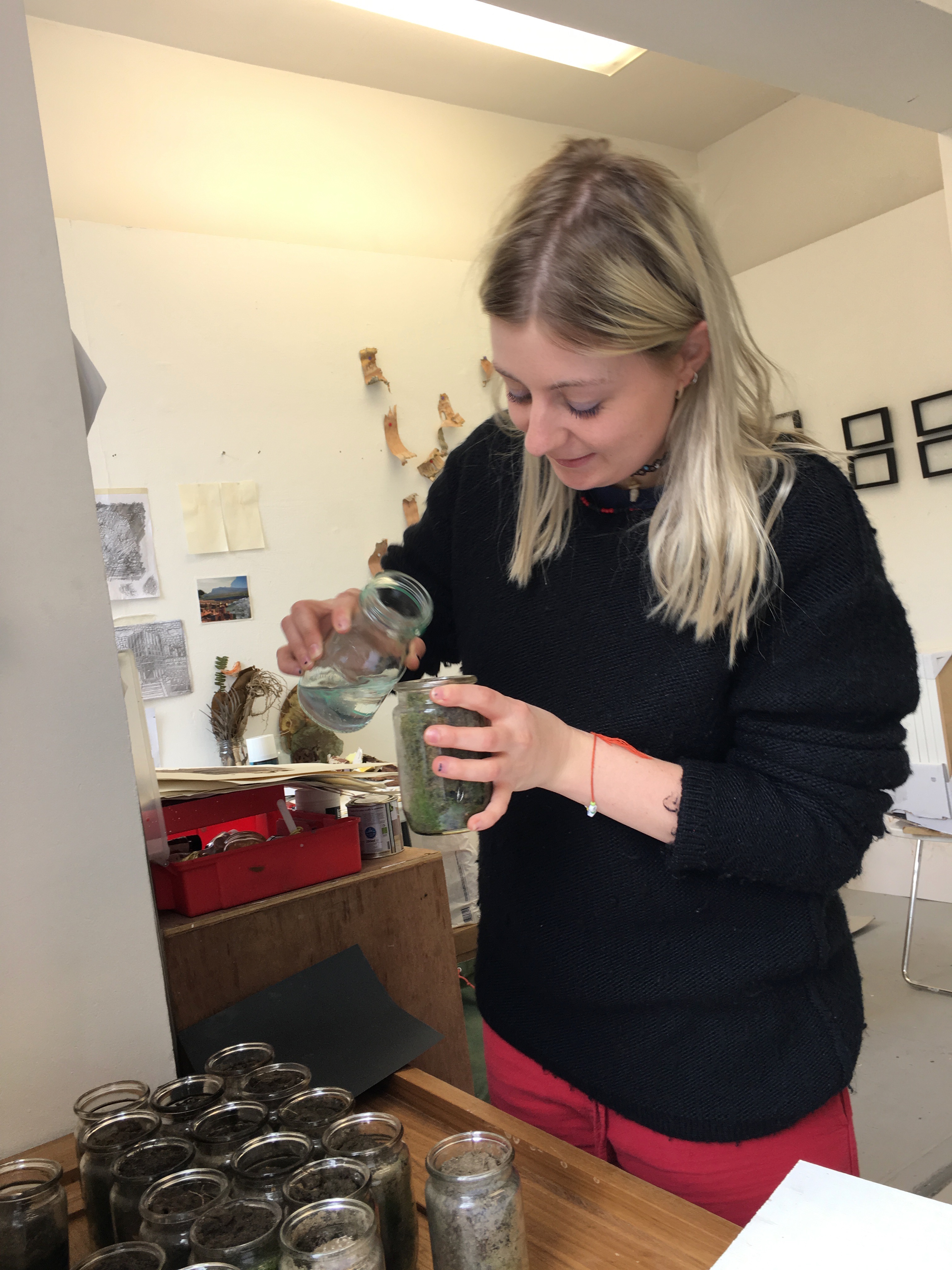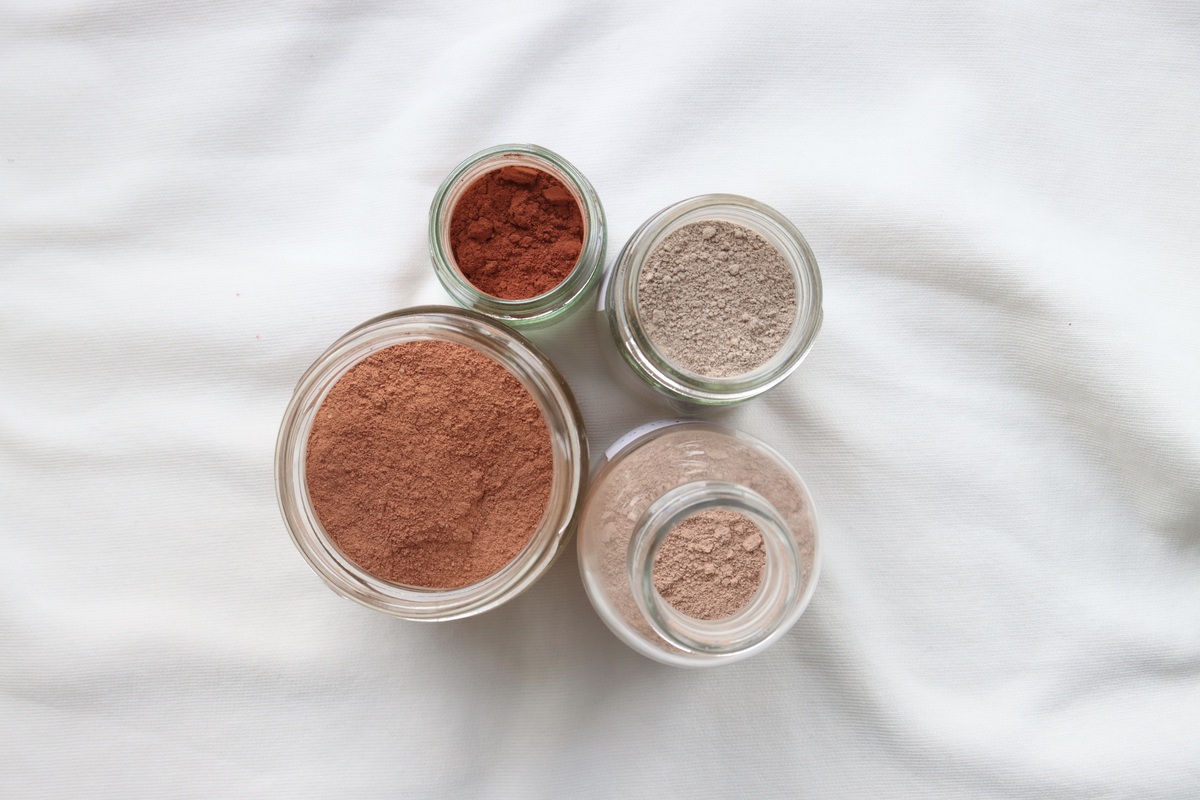


“Portraying the land with the land” is Polly Bennett’s speciality — as an environmental artist, she uses traditional tools and processes as well as her own pigment, made out of natural matter, to create work that portrays nature.
As part of a residence with ArtHouse Jersey, alongside the Trinity Buoy Wharf Drawing Prize exhibition, Polly spoke to islanders about her practice and led workshops on how to create natural pigments and use them in drawings.
Ahead of her residency in Jersey, Express spoke to Polly about her artistic inspiration and creative process...
My art practice is environment-based. I have always liked to collect things since I was quite young.
I use natural materials in my practice to portray the natural environment. I try to find different ways to use materials and usually they tend to be quite historical and traditional practices.

Pictured: One of Polly's "environment-based" creations.
The research is part of making the piece. My work is quite symbolic, there is a symbolism running through them to show the natural world.
Originally, my work was figurative. In my second year at university, I was living in London. I am from Kent, so kind of a rural area and I found myself missing that rural environment, so my work changed quite dramatically, and it began to be about the rural environment I grew up in.
I collect lot of things: bones, skeletons, hundreds of bees, everything… so I had a vast collection which I was not doing anything with. It was a bit of a problem because I had just so much stuff! The natural development was to start using it in my practice which has become quite environmental.

Pictured: “Portraying the land with the land” is artist Polly Bennett’s speciality.
I also liked the idea of found objects. I found it interesting to see how you can change the context of something, repurpose it or recycle it, especially in the climate we are living in.
In 2017, I was awarded two grants: one to go to Slovenia, one to Iceland. It was the first time I picked up rock to grind it into pigments. Ever since then, whenever I am travelling, I always pick up rocks to make into pigments.

Pictured: "I use everything to make pigments – bones, plant matter and metal."
It has been a big part of my practice and my learning and understanding of it has developed. I use everything to make pigments – bones, plant matter and metal. I make all of my own paints – they are all natural paints, and I do not buy paints anymore. My work includes the story of their source and how they were found.
I will be there for one week and I am going to be doing two workshops based on my pigments. I will be collecting materials from the local area and showing people how to purify them, turn them into pigments, and then turn them into paint.
In the drawing workshop, we will be using pigments created locally and various handmade tools that you can make from natural materials found in nature.
It will be very much about experimenting and learning about traditional and historical tools and materials that are no longer used but can be used very well in a contemporary context.
Comments
Comments on this story express the views of the commentator only, not Bailiwick Publishing. We are unable to guarantee the accuracy of any of those comments.